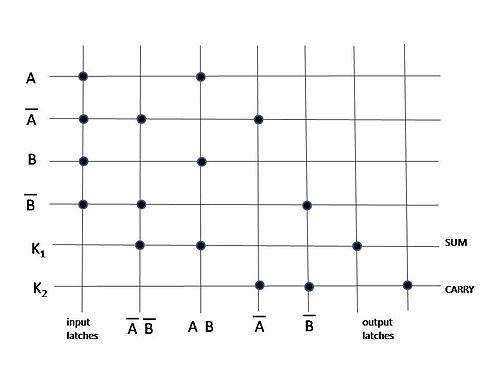This article has multiple issues. Please help improve it or discuss these issues on the talk page . (Learn how and when to remove these messages)
|
The Crossbar latch is a technology published by Phillip Kuekes of HP Labs in 2001 and granted a US patent in 2003, [1] with the goal of eventually replacing transistors in various applications. [2] This would enable the creation of integrated circuits composed solely of memristors, which, according to the patent, might be easier and less expensive to create. In 2005, Phillip Kuekes stated that the crossbar latch "could someday replace transistors in computers, just as transistors replaced vacuum tubes and vacuum tubes replaced electromagnetic relays before them." [3]
